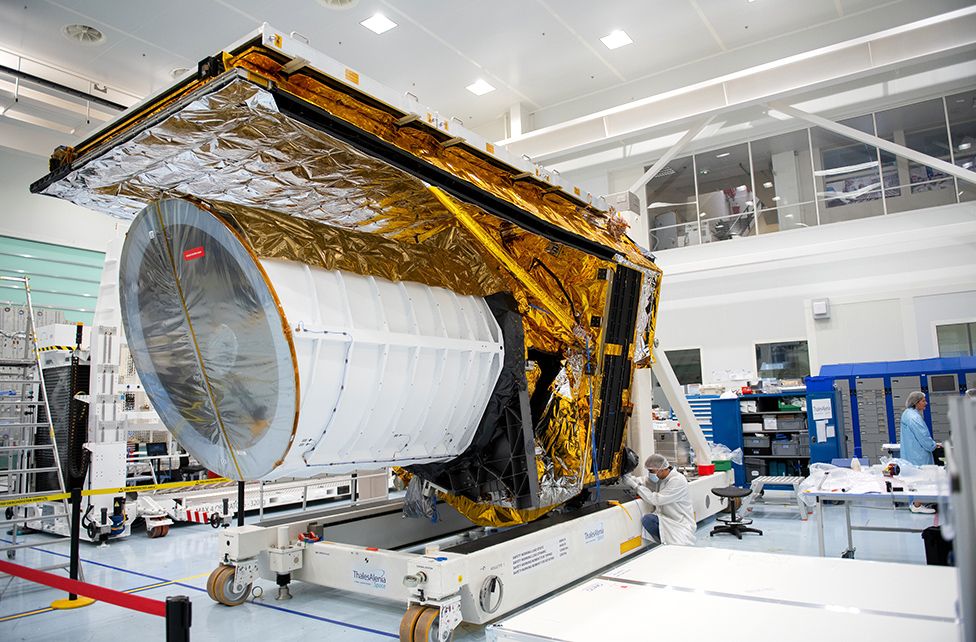The Euclid spacecraft, located in a sanitized room in France, is set to embark on a historic mission in a few months to investigate two of the greatest mysteries of the universe: dark matter and dark energy.
Despite making up 95% of the universe, these phenomena are poorly understood, a “cosmic embarrassment” according to Euclid project manager Giuseppe Racca.
The European Space Agency’s mission aims to chart a 3D map of the universe using a 2-ton spacecraft, equipped with a 1.2-meter telescope and the Near Infrared Spectrometer and Photometer (NISP), which can detect infrared wavelengths not visible to the human eye.
Euclid will join fellow space telescope James Webb at the second Lagrangian Point, around 1.5 million kilometers from Earth, and offer a wide field of view to locate massive structures like black holes.
Euclid’s survey will be able to point Webb in the right direction for closer inspection.
The mission, costing €1.4 billion ($1.5 billion), is planned to last until 2029, with the possibility of an extension. By subtracting visible matter, Euclid will use weak gravitational lensing to detect the presence of dark matter.

